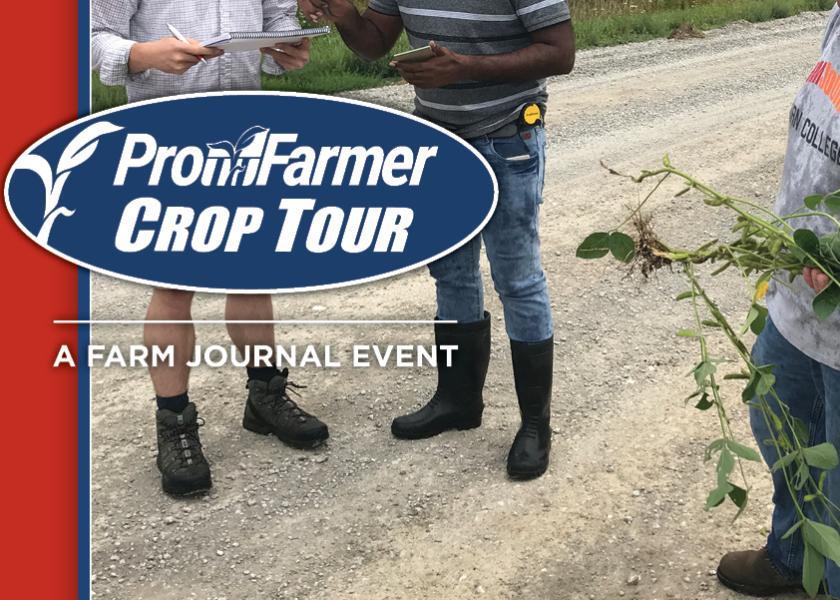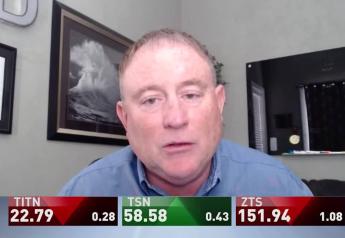2021 Pro Farmer Crop Tour: Answers to Common Questions

The annual Pro Farmer Crop Tour provides insights into potential corn and soybean production and gathers scout reporting from 2,000+ fields across Illinois, Indiana, Iowa, Minnesota, Nebraska, Ohio and South Dakota.
This year’s event will run Aug. 16-19. You have the opportunity to select your Tour stop or watch online from wherever you are. Learn more and register now!
In an effort to head-off some of the questions about Crop Tour sampling, here’s our answers to a few “Crop Tour FAQs!”
How do you select a field to sample?
The Pro Farmer Crop Tour runs the same 22 routes each year – 10 on the western leg and 12 on the eastern leg. By following the same routes each year, it brings consistency to the Tour. But for a tour like this to work, field selection has to be random. We instruct teams of 3 to 4 scouts per vehicle to stop every 15 to 20 miles where they can collect a corn and soybean sample. Do we sometimes stop in the same field in back-to-back years? It’s possible, but it’s only by coincidence. Distance determines when stops are made, not if it’s a “good” or “bad” field. That’s one reason we load routes with a mix of “interests.” Farmers, media, hedge fund managers, grain importers, grain analysts and marketing advisors keep each other “in check” throughout the day.
How do you determine where to sample from a field?
Part of the consistency of the sampling is a standardized process to select plot locations in each cornfield. Scouts make sure they are past the end rows (head lands, turn rows… whatever you call them) and the plot is established 35 paces down the main row. From the edge of a cornfield, there’s no way of observing what will be at that spot. If that spot is a drowned-out hole, scouts record the row width at the edge of the field, then record zero ears, zero kernel rows and zero inches of grain for a zero yield and move to the next field. That’s true even if there is good corn at the edges of that hole. Don’t forget, the goal is not to peg the yield in each and every field, but to find how yield potential in a crop district, state and in the Corn Belt compares to previous years.
How do you know you are using “average” ears in the corn sample?
We don’t. And we don’t care. At the plot location, we count all the ears that will make grain on two, 30-foot rows. From one of those rows, we pull the fifth, eighth and 11th ear for sampling. It doesn’t matter if the fifth, eighth and 11th ears are the three best, or worst, ears in the field. This process allows scouts to be consistently random in ear selection.
How do you count all the pods in a 3-by-3-foot square?
We don’t. Contrary to some reports, we do not travel the seven Tour states with a hula-hoop. We calculate the number of pods in a 3-by-3-foot square. Scouts go to a “representative spot” in bean fields and layout one 3-foot plot. All the plants are counted in the plot and three plants are randomly selected. All pods measuring one-quarter inch or more are counted on the three plants and the average number of pods per plant is calculated. The pod average and number of plants is used to calculate the number of pods in the three-foot plot. Finally, the number of pods in the three-foot plot is multiplied by 36 and divided by the row space to calculate the number of pods in a 3-by-3-foot square.
Read More
Reserve Your Front-Row Seat for Pro Farmer Crop Tour
A View from the Field: A Preview of the 2021 Pro Farmer Crop Tour







